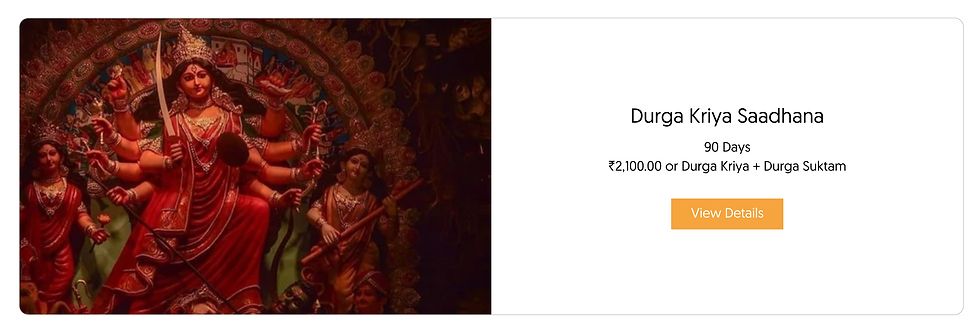Kali Sahasranamavali - 1000 Names of Maa
- Rudranaad Foundation

- Oct 18
- 2 min read

What does it mean to call the Divine Mother by 1000 forms?
What is this Sahasranamavali?: A hymn from Purāṇic tradition, chanting 1000 names of Mother Kali. The number "1,000" is not a strict measurement but symbolizes the infinite nature of the divine and the desire of a devotee to use a multitude of descriptions to honor the deity.
As the glow of Diwali fills our homes, it is also time to let its light fill our hearts.This sacred festival is not only about outer illumination — it is a call to awaken the radiance within.
In the Vedic vision, the Goddess expresses Herself in infinite forms.Lakṣmī shines as abundance, harmony, and beauty — the gentle current of grace.Kālī roars as transformation, courage, and liberation — the fierce current of truth.
When we honour both, we align with the full spectrum of Śakti — the power that creates, sustains, and renews life.
On Lakṣmī Pūjan – October 20th, chant the 108 Names of Goddess Lakṣmī, inviting Her blessings of prosperity, purity, and peace.During the days of Diwali, especially the nights leading to Amāvasyā, chant the Kālī Sahasranāmāvalī, invoking the fearless power of the Dark Mother to burn away ignorance, limitation, and fear.
Together, these two practices awaken balance — Lakṣmī’s serenity and Kālī’s strength — bringing both illumination and transformation to your life.
Grace without strength becomes fragile.Strength without grace becomes harsh. In their union, the soul discovers wholeness.
How to Chant and Practice This Diwali
Create a Sacred Space:Choose a quiet, clean corner of your home. Light a diya or ghee lamp, and place an image or yantra of Lakṣmī and Kālī together — the two faces of one Divine Mother.
Begin with Silence:Sit comfortably, close your eyes, and take a few deep breaths. Offer gratitude — for all that has been received and all that is yet to unfold.
Chant with Devotion:
Begin with Kālī Sahasranāmāvalī — letting Her fierce compassion dissolve negativity and fear.
Follow with the 108 Names of Śrī Lakṣmī, filling the purified space within you with light, love, and abundance.
If time permits, offer flowers, rice, or petals with each name as a symbol of surrender.
Best Time to Chant:
Kālī Sahasranāmāvalī — evenings or midnight meditation during the days before Diwali.
Lakṣmī Nāmāvalī — morning or evening of Lakṣmī Pūjan (October 20th).
Close in Stillness:After chanting, sit quietly. Feel the combined presence of Kālī and Lakṣmī — the pulse of power and peace moving through you.
To learn more about Maa Durga , join our e-course:


Comments